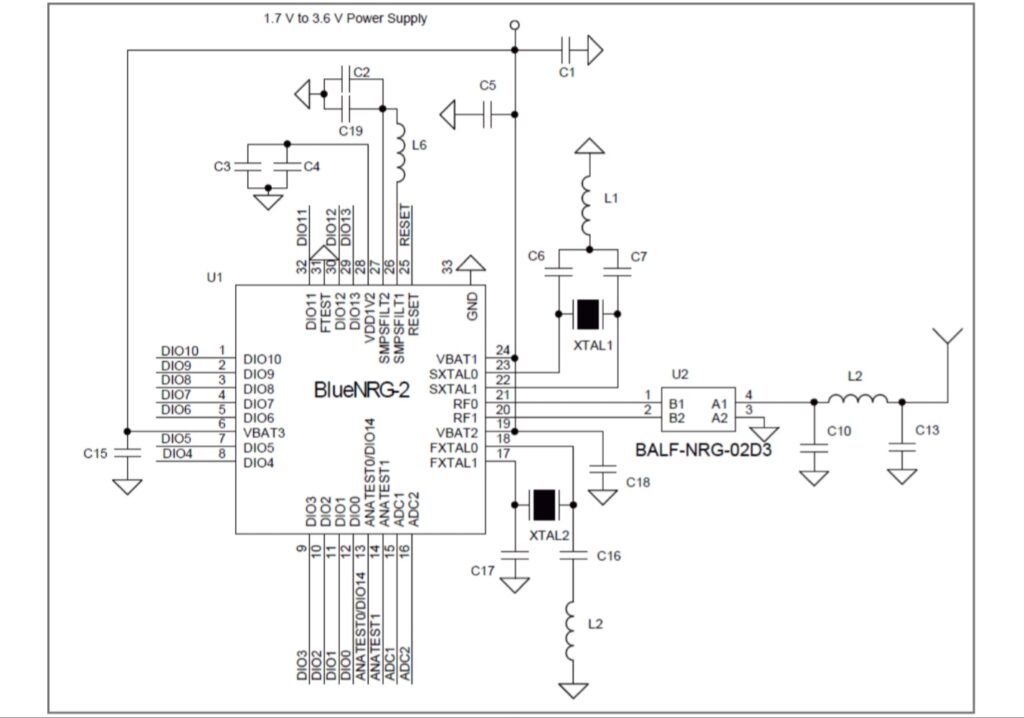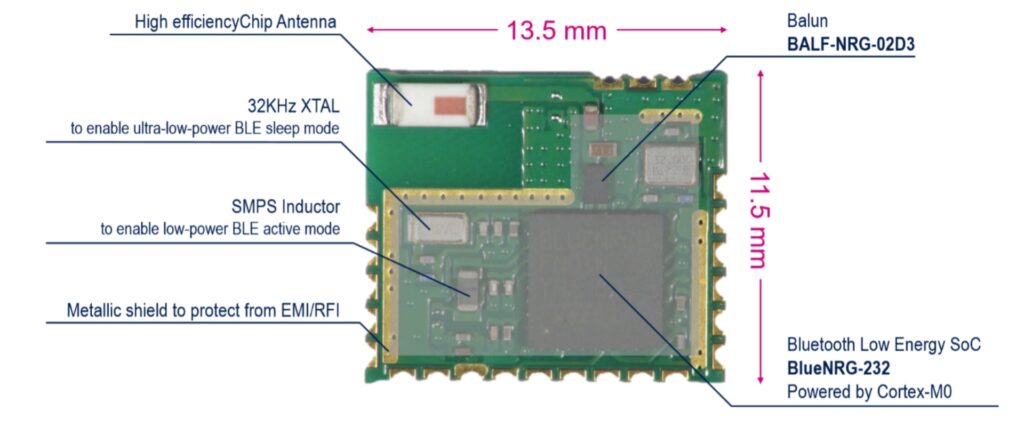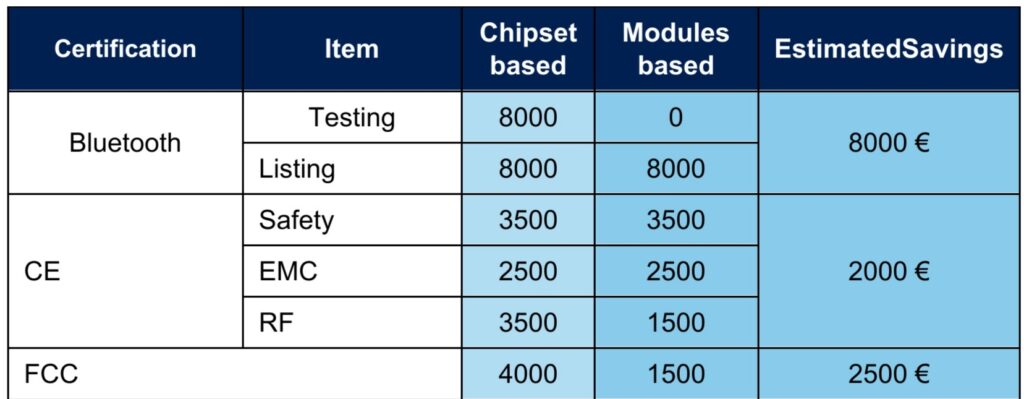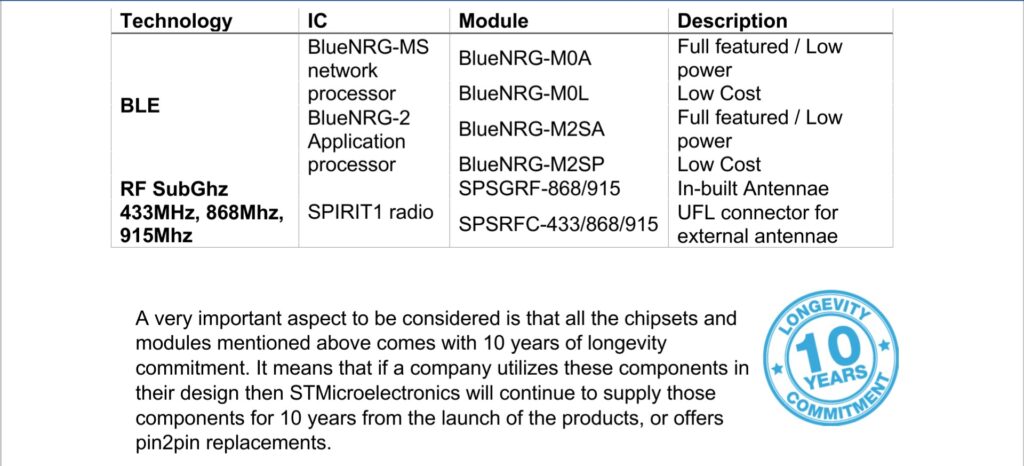Vishal GOYAL, Group Manager, Technical Marketing, South Asia and India, STMicroelectronics
According to Stastita (1), by 2025 IoT devices are expected to number more than 75 billion, far outnumbering the UN’s forecast of 8.1 billion people on earth by that year (2). IoT is probably one of the biggest drivers for technology companies. Probably the most important feature of an IoT device is that it is connected.
Wireless connected devices have a RF radio, antennae and associated circuit to convert electrical signals in electromagnetic waves and vice versa. Designers have two option to implement this circuit – a) Using RF chipset and design associated RF section and b) Use a module with RF chipset and associated RF section already mounted. In this article we will compare both the approach and help designers to take informed decision.
RF section using chipset and module
Implementation of RF section using chipset approach consists of RF IC, Antennae, Balun and Filters, matching networks, crystals and other passive elements. Below is the reference schematic of the implementation using STMicroelectronics BlueNRG BLE SoCs

Figure 1 : BlueNRG-2 reference schematic
Implementation using Module approach is much simpler. The same circuit as in figure1 can also be implemented using readily available module. Below is the pin-out and internal block diagram of BlueNRG-M2SA module from STMicroelectronics. The module is implemented using BlueNRG-2SoC and associated circuit.

Figure 2: BlueNRG-M2SA pinout and internal blocks
Comparison between chipset and module approach
There are three main aspects to be considered while selecting a right approach – a) Time to Market, b) Certification and c) Cost. We will review each of these aspects to arrive at logical understanding.
Time to Market
Some steps to design RF section using chipset are as follows
i) Designing schematic and layout
ii) Developing PCB from PCB maker
iii) Mounting PCB
iv) Fine tuning values of passives for optimized performance
v) Ordering all the components of the module and manufacturing it
vi) RF tests and certifications
Designing a RF section with chipset consume almost three-six months. It also requiresmultiple resources such as RF designers, supply chain and multiple service partners such as PCB makers and EMS companies. This approach is suitable for a very high volume production, but is not desirable for prototyping and low volume production.
Modules are designed for fast time to market. Adding connectivity using modules does not require any prior RF expertise. Wireless connectivity is easy like a modular drop-in add-on as the designers get a readily available RF section, the implementation using modules is very quick. So, designers can bring their product into market very quickly. This is particularly very important for prototyping and low volume production.
Certification
Virtually any electronic device undergoes general emission testing. Besides devices which have RF sections are also treated as intentional radiators. So, they require an additional certification to ensure they do not emit power more than allowed, or disturb other devices or frequency bands. There is no global certification, and every country or region have their own standards. Often the standards are similar, but they still require an application and associated processes.
Besides, most of the RF technologies such as BLE, Wi-Fi or GPRS comply to a standard defined by those specific organizations. So, they go underthose certifications also.
Let us understand certification aspect using devices under consideration – BlueNRGSoCs and BlueNRG-M2SA module from STMicroelectronics.
A Bluetooth Low Energy enabled device need to be certified by Bluetooth SIG – a governing body of Bluetooth to use Bluetooth Logo. They also need to get RF certification from different Countries and Regions. Certification defined by some of the countries and regions are FCC (US), RED (Europe), WPC(India), IC (Canada), SRCC(China) and Type (Japan).
As modules are already tested and certified as radiated device, designs implemented using module not require further radiated device certification and will be treated as yet another electronic device. Below is the comparison of cost using chipset and module.
Certification Item Chipset based Modules based EstimatedSavings
Bluetooth Testing 8000 0 8000 €
Listing 8000 8000
CE Safety 3500 3500 2000 €
EMC 2500 2500
RF 3500 1500
FCC 4000 1500 2500 €

Process of certification is time taking, tedious and costly. If the volume of production is large the cost can be amortized by economy of scale but not efficiently by small scale production.
Cost
Some of the elements of cost are already discussed in this article. In general cost of
- Cost of circuit design
- Cost of designers, supply chain and production
- Cost of certification
- Cost of opportunity
In general, these costs are justified if volume of production is above 100-150Kpcs per year, or the product form factor does not allow a dedicated module to be incorporated.
Module offering from STMicroelectronics
STMicroelectronics is a leading semiconductor company and wire wide range of low power RF devices and modules. Some of the RF chipsets and associated modules offer by STMicroelectronics are in below table

Conclusion
Chipset approach should be adopted if the end device form factor cannot adjust module or production volume is very large to justify cost of design, production and certification. Modules should be preferred if company want to focus on its core competencies and avoid hassles of RF design. Modules are also preferred for prototyping and low volume production. STMicroelectronics is a leader in Low Power RF technologies and provide wide range of chipsets and Modules for wide range of usage scenarios as discussed in this article.
1) https://ift.tt/2dFe1TG
2)https://ift.tt/2MuM3sF
No comments:
Post a Comment